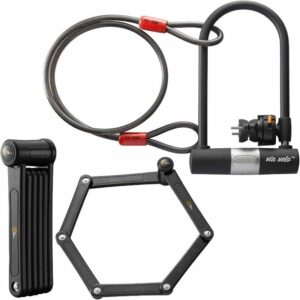HOW MUCH DOES AN ELECTRIC BIKE COST? A GUIDE TO ELECTRIC BIKE COSTS IN 2024
Key Takeaways
- Wide Price Range: Electric bikes come in a broad spectrum of prices, influenced by their features, quality, and brand reputation.
- Influencing Factors: The cost of an e-bike is significantly affected by its battery quality, motor power, design materials, and additional technological features.
- Budget Planning: Understanding your needs and the factors that influence e-bike prices can help in making a cost-effective purchase.
- Long-Term Investment: Beyond the initial purchase, consider the maintenance, battery replacement, and potential financing options for a comprehensive budget plan.
- Market Trends: Stay informed about the evolving market, including the introduction of new models, technological advancements, and potential financial incentives that could affect e-bike pricing.
Electrifying the Streets: The Surge of E-Bikes
In recent years, the electric bike (e-bike) revolution has taken the world by storm, reshaping urban mobility and offering an eco-friendly alternative to traditional transportation methods. With their ability to blend the benefits of conventional bicycles with the added power of electric motors, e-bikes have emerged as a game-changer for commuters, fitness enthusiasts, and environmental advocates alike. The allure of bypassing traffic, reducing carbon footprints, and enjoying a more accessible form of physical activity has propelled the popularity of e-bikes to unprecedented heights.
However, with the diverse range of models available on the market, understanding the costs associated with purchasing and owning an e-bike becomes crucial. The initial investment can vary widely, influenced by factors such as battery life, motor power, and the bike’s design and features. Additionally, potential buyers must consider long-term expenses, including maintenance and possible upgrades. This introduction aims to shed light on the importance of comprehending e-bike costs, ensuring that enthusiasts can make informed decisions that align with their lifestyle and budget. As we delve deeper into the nuances of e-bike pricing, readers will gain insights into how to navigate the wide spectrum of options available, making the journey towards e-bike ownership as smooth and enjoyable as the ride itself.
Electric Bikes: Navigating the Costs
In the realm of personal transportation, electric bikes (e-bikes) have surged in popularity, offering an eco-friendly, efficient, and enjoyable way to commute, explore, or simply enjoy the outdoors. The allure of e-bikes lies in their ability to merge the physical health benefits of traditional cycling with the added convenience and speed provided by their electric motors, making them an appealing option for a wide range of users.
Understanding the factors that contribute to the pricing of e-bikes is crucial for potential buyers. These factors often include the quality and capacity of the battery, the power of the motor, the materials used in the bike’s construction, and any additional features such as GPS tracking or integrated lighting systems. With prices varying significantly across different models and brands, a clear grasp of what influences e-bike costs can help consumers make informed decisions that align with their needs and budget. Recognizing the importance of this knowledge can lead to a more satisfying purchase and a better overall e-biking experience.
Navigating the Price Landscape of Electric Bikes
 Electric bikes (e-bikes) present an ever-expanding market, offering a wide range of models to cater to different needs and budgets. The spectrum of e-bike costs can be broadly categorized into three main tiers: budget, mid-range, and premium.
Electric bikes (e-bikes) present an ever-expanding market, offering a wide range of models to cater to different needs and budgets. The spectrum of e-bike costs can be broadly categorized into three main tiers: budget, mid-range, and premium.
- Budget E-Bikes ($300 – $1,000): These e-bikes are perfect for beginners or those on a tight budget. They typically feature basic components and specifications, sufficient for short commutes and light usage.
- Mid-Range E-Bikes ($1,000 – $3,000): Offering a balance between price and performance, mid-range e-bikes come with better-quality components, increased battery life, and more advanced features suitable for longer commutes and more frequent use.
- Premium E-Bikes ($3,000 and up): At the top end of the spectrum, premium e-bikes boast high-end components, superior build quality, cutting-edge technology, and exceptional performance capabilities. Designed for enthusiasts and professionals, these bikes provide the best in comfort, durability, and efficiency.
Understanding this spectrum is crucial for potential buyers to align their needs and expectations with their budget, ensuring they make an informed purchase that offers the best value for their investment.
Electric Bike Features that Influence Costs
Lorem ipsum dolor sit amet, consectetur adipiscing elit. Ut elit tellus, luctus nec ullamcorper mattis, pulvinar dapibus leo.
The Impact of Battery Life and Type on E-Bike Costs
The heart of any electric bike is its battery, a critical component that significantly influences both performance and price. Battery life and type are pivotal factors determining an e-bike’s cost, with two main types of batteries in use today: lead-acid and lithium-ion.
- Lead-Acid Batteries: More affordable but heavier, with a shorter lifespan and longer charging times. Their lower upfront cost makes them common in budget e-bikes.
- Lithium-Ion Batteries: Lighter, more efficient, and with a longer lifespan, these batteries are found in mid-range to premium e-bikes. Though pricier, their durability, faster charging, and longer range offer greater value over time.
The capacity and quality of the battery not only affect the initial purchase price but also play a role in long-term expenses due to replacement costs and charging efficiency. Investing in a high-quality battery can enhance your e-bike’s performance, range, and lifespan, making it a crucial consideration for potential buyers looking for value and reliability in their e-bike investment.
The Core of Performance: Motor Power’s Role in Electric Bike Pricing
The motor, an e-bike’s powerhouse, profoundly influences both its performance and price. Motor power, measured in watts, dictates an e-bike’s speed, acceleration, and ability to tackle hills. Higher-powered motors offer enhanced performance, making them a key feature in premium e-bikes, which leads to a higher price point. Conversely, e-bikes with lower-powered motors are more affordable and suited for casual or urban riders. The choice of motor also affects battery life, as more powerful motors may require more frequent charging, indirectly influencing long-term costs and convenience.
How Design and Materials Shape E-Bike Costs
 The design and materials of an electric bike significantly impact its overall cost, functionality, and aesthetic appeal. High-quality materials like carbon fiber or high-grade aluminum, known for their strength and lightweight properties, are often used in premium e-bikes to enhance performance and durability. These materials, however, come at a higher cost compared to more common ones like steel, used in budget-friendly models for its affordability but added weight.
The design and materials of an electric bike significantly impact its overall cost, functionality, and aesthetic appeal. High-quality materials like carbon fiber or high-grade aluminum, known for their strength and lightweight properties, are often used in premium e-bikes to enhance performance and durability. These materials, however, come at a higher cost compared to more common ones like steel, used in budget-friendly models for its affordability but added weight.
The electric bike’s design complexity also plays a crucial role. Sleek, aerodynamic designs that require advanced manufacturing techniques and custom parts increase production costs. Features like integrated battery systems, foldable frames, or waterproofing add to the expense but offer convenience and enhanced user experience.
For instance, a mountain e-bike designed with a carbon fiber frame, full suspension, and a high-power motor is priced higher than a basic commuter e-bike made from steel, with a simple drivetrain and minimalistic design. These examples underscore the trade-offs between cost, performance, and comfort, guiding consumers in choosing an e-bike that fits their needs and budget.
Brand Influence and Warranty Assurance in E-Bike Costs
The brand and warranty of an electric bike significantly influence its price and perceived value. Established brands with a reputation for quality and reliability often command higher prices due to their trusted performance and customer service. For example, brands like Specialized and Trek offer advanced technology and comprehensive warranties, assuring buyers of their investment’s long-term value.
Warranties vary, covering components from 2 to 5 years, and highlight the manufacturer’s confidence in their product. A longer, more inclusive warranty can signal a higher quality e-bike, potentially saving money on repairs. Consumers should look for warranties that cover major components like the frame, motor, and battery, and understand what is not covered to avoid future surprises. This careful consideration ensures that buyers choose a brand and warranty that aligns with their expectations for quality, performance, and support, enhancing their e-bike experience.
Elevating the Experience: The Role of Additional Features and Technology
E-bikes are not just about getting from point A to B; they’re about how enjoyably and efficiently you can make that journey. This is where additional features and technology come into play, significantly impacting the cost.
Advanced Connectivity: Modern e-bikes often feature Bluetooth or GPS connectivity, allowing riders to track their routes, monitor their fitness, or even lock their bike remotely through a smartphone app. For instance, the VanMoof S3 offers theft tracking and remote unlocking features, which add to its value and price.
Integrated Lights and Safety Systems: E-bikes like the Specialized Turbo Vado integrate lights that are powered by the bike’s battery, enhancing visibility and safety without the need for separate charging. Some models also include advanced safety features like ABS or collision detection, pushing the price higher due to the added technology.
Performance Enhancements: Variable pedal assist levels, regenerative braking, and suspension systems tailored for specific terrains, such as those found in the Trek Powerfly FS, offer a more customized and comfortable riding experience, influencing the overall cost.
Incorporating these technologies and features increases production costs but significantly enhances rider experience and bike functionality, justifying the higher price tags associated with advanced e-bikes.
Pedaling Through Varieties: Types of Electric Bikes and Their Costs
 Different types of e-bikes cater to various riding preferences and terrains, each with a unique price range reflecting its design, technology, and intended use.
Different types of e-bikes cater to various riding preferences and terrains, each with a unique price range reflecting its design, technology, and intended use.
Urban/Commuter Electric Bikes: Designed for city travel, these e-bikes prioritize comfort and practicality with features like racks and fenders. Prices range from $500 for basic models to over $3,000 for premium options with advanced tech.
Mountain Electric Bikes: Built for off-road adventures, these models boast durable frames and high-performance suspension systems. Entry-level models start around $500, with high-end versions reaching $5,000 or more, depending on battery life and motor power.
Road Electric Bikes: Focused on speed and agility, road e-bikes are lighter and sleeker, with costs starting from $2,500 to $6,000+ for top-tier models featuring ultralight materials and aerodynamic designs.
Each e-bike type is engineered to enhance the riding experience for its specific environment, contributing to the variation in costs across different categories.
Energizing Your Purchase: Financial Incentives and Rebates
Government Incentives: Many governments offer incentives for e-bike purchases to encourage eco-friendly transportation. These can significantly reduce the upfront cost and make higher-end models more accessible.
Rebates and Discounts: Retailers or manufacturers might provide direct rebates, seasonal discounts, or loyalty programs that lower purchase prices.
Tax Benefits: In some regions, buying an e-bike can offer tax benefits, such as deductions or credits, further offsetting the cost.
These financial aids can make e-bikes more affordable, encouraging wider adoption and supporting sustainability efforts. It’s beneficial for consumers to research and take advantage of these opportunities when considering an e-bike purchase.
Maximizing E-Bike Value Within Your Budget
Research and Compare: Start by comparing various models and brands within your budget. Pay attention to reviews and ratings for quality and reliability.
Prioritize Features: Identify which features are must-haves versus nice-to-haves. Invest in a solid frame and battery life over less critical extras.
Look for Deals: Keep an eye out for sales, clearance models, or last year’s stock, which can offer significant savings.
Consider Financing Options: Some retailers offer financing plans that can make purchasing easier without paying everything upfront.
Utilize Incentives: Take advantage of any available rebates or incentives to reduce the overall cost.
This approach helps in making a well-informed decision, ensuring that you get the best value for your money when purchasing an e-bike.
How to Choose the Right Electric Bike for Your Budget
Assess Your Needs: Understand what you primarily need the e-bike for, commuting, mountain biking, or leisure. This helps in not overpaying for features you won’t use.
Research and Compare: Look into various models and brands within your budget range. Compare their specifications, battery life, motor power, and user reviews to find the best value.
Battery and Motor: Opt for the best battery life and motor power you can afford, as these significantly impact performance.
Consider the Total Cost: Remember to account for potential maintenance costs, accessories, and any necessary upgrades in your budget.
Look for Deals: Keep an eye out for sales, discounts, rebates, and government incentives that can make a pricier model more affordable.
Test Ride: If possible, test ride multiple e-bikes. It’s the best way to gauge whether an e-bike suits your needs and if it feels right for you.
Warranty and Service: A good warranty can save you money in the long run. Check what’s covered and for how long.
Balancing cost and needs means prioritizing essential features over nice-to-haves, and being informed about what contributes to the price of an e-bike. This approach ensures you invest in a bike that fits both your lifestyle and budget.
Key Consderations Before Purchasing
 Understanding Your Needs
Understanding Your Needs
Primary Use: Reflecting on the primary use of your e-bike is crucial. Whether it’s for daily commuting, leisurely rides through the park, or tackling off-road trails, each purpose demands specific features from the e-bike. Commuters might prioritize battery range and comfort or folding bikes, while adventure seekers might look for robust frames and superior suspension.
Riding Environment: The terrain and climate of your usual routes also play a significant role in your choice. Urban riders in flat areas might not need the same power as those facing hilly terrains. Similarly, weather-resistant features might be more critical in wet climates.
Identifying your needs helps in choosing an e-bike that not only fits your lifestyle but also ensures you’re not paying for unnecessary features.
Technical Specifications
Battery Life and Type: Delving into the battery specifications is essential for potential e-bike owners. The type of battery (usually lithium-ion for modern e-bikes) and its capacity (measured in watt-hours) will determine both the range and longevity of your ride. Expected battery life, often indicated by charge cycles before performance degrades, can significantly affect long-term usability and cost-effectiveness.
Motor Power: Motor wattage directly influences an e-bike’s speed and its ability to climb hills. Higher wattage means more power, enabling better performance in challenging terrains but may also lead to quicker battery drainage. Balancing motor power with battery capacity and your typical riding conditions is key to selecting an e-bike that meets your needs without overspending on unnecessary features.
Practical Considerations
Warranty Coverage: A comprehensive warranty can provide peace of mind and protect your investment. Look for warranties that cover the e-bike’s critical components, such as the frame, motor, and battery, for a reasonable period. This coverage ensures that you won’t face unexpected costs if issues arise.
Service and Maintenance: Accessibility to service centers or mobile repair services is crucial for maintaining your e-bike in top condition. Before making a purchase, verify the availability of authorized repair services in your area. Regular maintenance can extend the life of your e-bike and prevent major repairs, making it a key factor in your decision process.
This approach to practical considerations ensures you’re informed about the support and maintenance landscape for your e-bike, leading to a better ownership experience.
Cost of Ownership
Accessories and Upgrades: When calculating the total cost of owning an e-bike, it’s crucial to factor in the expenses for necessary accessories, such as helmets, locks, lights, and maintenance tools, as well as potential upgrades you might consider in the future. These can significantly impact the overall investment.
Resale Value: The brand reputation and model popularity of your e-bike can greatly affect its resale value. E-bikes from well-regarded brands or those known for their durability and performance tend to retain more of their value over time. Considering this aspect can influence the long-term cost-effectiveness of your purchase.
Taking these points into account will provide a more comprehensive understanding of the total cost of e-bike ownership, beyond just the initial purchase price.
The Future of E-Bike Pricing
Looking ahead, the e-bike market is poised for transformative shifts. As technological advancements accelerate, we can anticipate more affordable and efficient electric bikes, thanks to breakthroughs in battery and material sciences. This democratization of e-bike technology could broaden access, making sustainable transport options more available to a wider audience. Yet, as demand for customization and advanced features grows, we’ll likely see the emergence of a luxury e-bike segment catering to enthusiasts seeking premium experiences.
Additionally, the role of governmental incentives and environmental policies cannot be understated; as they evolve, they’ll significantly impact both pricing strategies and adoption rates, potentially making e-bikes an even more attractive option for consumers looking to reduce their carbon footprint.
This dynamic landscape suggests a future where e-bikes are not just more prevalent but also more varied in terms of pricing and features, aligning closely with broader environmental and economic trends.
FAQs about the Cost of an E-Bike
- Q: What factors affect the cost of an electric bike? A: Battery quality, motor power, brand reputation, and additional features like GPS or Bluetooth connectivity.
- Q: Can I find a good e-bike under $1000? A: Yes, there are budget-friendly options available, but they might have limited features and lower battery range.
- Q; How much should I expect to spend on a mid-range e-bike? A: Mid-range e-bikes can cost between $1,500 to $4,000, offering a balance of quality, performance, and additional features.
- Q: What makes premium e-bikes expensive? A: Premium e-bikes have high-end components, superior battery range, advanced technology, and often, a prestigious brand name.
- Q: Is it worth investing in a premium e-bike? A: If you prioritize performance, durability, and advanced features, and you frequently use your e-bike, a premium model might be a worthwhile investment.
- Q: What additional costs should I consider when buying an e-bike? A: Maintenance, replacement batteries, accessories like helmets and locks, and potentially insurance.
- Q: Can I finance an electric bike purchase? A: Many retailers offer financing options, allowing you to pay in installments.
- Q: Does the battery type influence the e-bike’s price? A: Yes, lithium-ion batteries are typically more expensive but offer longer life and better performance compared to other types.
Enlightened Choices: Ready to Ride the E-Bike Wave
In wrapping up, delving into the electric bike market reveals a spectrum of prices influenced by various factors, from the quality of components and innovative technologies to the prestige of brands. While budget options offer an accessible entry point, premium models promise an enhanced experience with superior performance and cutting-edge features. Beyond the initial investment, considering long-term costs like maintenance and accessories is crucial. Ultimately, selecting an e-bike transcends mere cost evaluation—it’s about embracing a sustainable, efficient, and exhilarating mode of transportation. Armed with knowledge, cyclists can make informed choices, ensuring their investment aligns with their lifestyle, needs, and aspirations for the road ahead.







